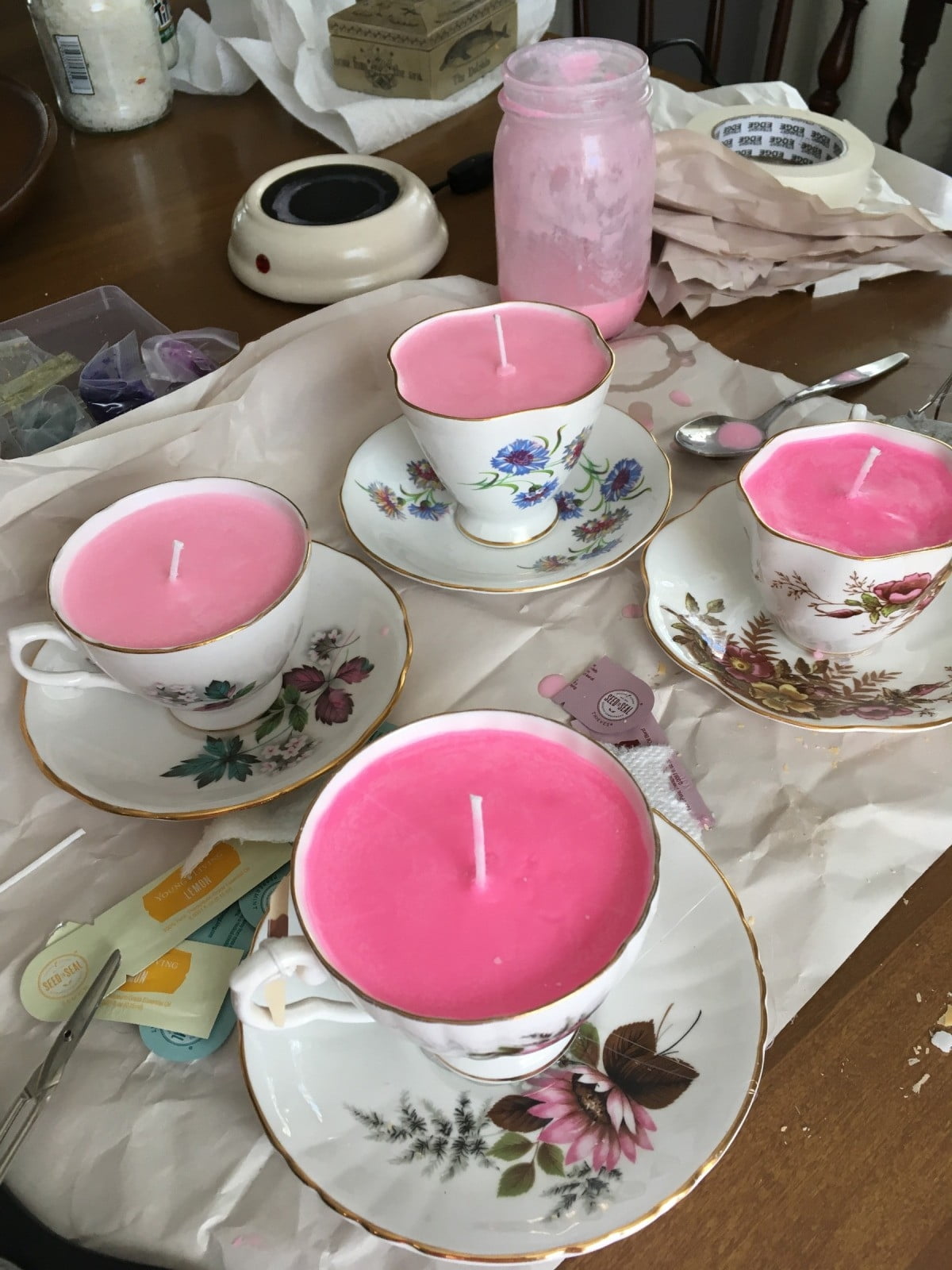Candle making is an art that has been practiced for centuries, evolving with new ingredients and techniques. One such popular ingredient that has gained attention in recent years is coconut oil. In this article, we will delve into the world of using coconut oil in candle making, exploring its benefits and unique properties.
The use of coconut oil in candle making offers a natural and sustainable alternative to traditional candle waxes. With its low melting point and clean-burning properties, coconut oil provides a long-lasting and eco-friendly option for creating beautiful candles. Whether you are a novice or experienced candle maker, incorporating coconut oil into your creations can add a touch of luxury and sophistication.
In the following sections, we will break down the basics of candle making, discuss the specific role that coconut oil plays in this craft, and provide tips on how to choose the right type of coconut oil for your candles. Additionally, we will explore how you can enhance your candle making experience with coconut oil through various scent combinations and delve into the health benefits and sustainability aspects of using this versatile ingredient.
Let’s embark on this journey together to discover the wonders of using coconut oil in candle making.
The Basics of Candle Making
Candle making is an ancient craft that has evolved over the years, with various ingredients and techniques used to create beautiful and aromatic candles. Understanding the basics of candle making is essential for anyone looking to delve into this creative hobby. The process typically involves melting a wax, adding fragrance or essential oils, and pouring the mixture into molds before letting it cool and solidify.
When it comes to the ingredients used in candle making, one crucial component is the type of wax chosen. While paraffin wax is commonly used due to its affordability and accessibility, many crafters are now turning to natural alternatives like soy wax, beeswax, and yes, coconut oil. Using coconut oil in candle making can offer several benefits such as a cleaner burn compared to paraffin wax, as it produces less soot and toxins when lit.
In addition to wax, other ingredients like wicks, dyes, and fragrances play a significant role in candle making. Choosing the right wick size for your candles is crucial for an even burn and proper scent throw. When using coconut oil in candle making, it’s important to select fragrances that complement its natural aroma or enhance it further. Experimenting with different fragrance combinations can help you create unique candles that appeal to your senses and mood.
| Benefit | Data |
|---|---|
| Cleaner Burn | Less soot and toxins produced compared to paraffin wax |
| Fragrance Compatibility | Complementing or enhancing natural coconut oil aroma |
The Role of Coconut Oil in Candle Making
Chemical Composition and Properties
Coconut oil is a popular choice for candle making due to its unique chemical composition and properties. Unlike other oils commonly used in candle making, such as soy or paraffin wax, coconut oil has a lower melting point, which means it burns at a cooler temperature. This characteristic helps create candles that burn slower and more evenly, resulting in a longer-lasting burn time.
Additionally, coconut oil has a high concentration of lauric acid, which gives it natural antimicrobial and anti-inflammatory properties. When used in candles, these properties can help purify the air when the candle is burning.
Smoke and Soot Production
One significant advantage of using coconut oil in candle making is its minimal smoke and soot production compared to other oils. Coconut oil burns cleaner than paraffin wax, for example, which produces black soot that can stain walls and ceilings over time. The clean-burning properties of coconut oil make it a preferred choice for those who want to enjoy candles without worrying about indoor air quality issues or potential health risks associated with soot inhalation.
Enhanced Aesthetic Appeal
In addition to its practical benefits, coconut oil also offers aesthetic advantages in candle making. When mixed with dyes or colorants, coconut oil can produce vibrant hues that add visual interest to the candles. Its ability to hold fragrances well allows for creating scented candles with long-lasting aroma.
The smooth texture of coconut oil also makes it easy to work with when pouring into molds or containers, resulting in professional-looking candles that are both visually pleasing and functional. Using coconut oil in candle making not only enhances the overall quality of the final product but also provides a unique sensory experience for users.
Choosing the Right Coconut Oil
When it comes to choosing the right coconut oil for your candle making projects, one of the main decisions you’ll need to make is between unrefined and refined options. Unrefined coconut oil, also known as virgin coconut oil, is extracted from fresh coconut meat without undergoing any chemical refining process.
This results in a coconut oil that retains its natural aroma and flavor, along with its beneficial properties. On the other hand, refined coconut oil is made from dried coconut meat that is often bleached and deodorized to create a neutral scent and flavor.
For candle making purposes, both unrefined and refined coconut oils can be used successfully. Unrefined coconut oil may add a subtle coconut fragrance to your candles, which can be appealing if you enjoy the tropical scent.
However, keep in mind that this fragrance may not be as strong or long-lasting as synthetic fragrances or essential oils. Refined coconut oil, on the other hand, has a neutral scent that won’t interfere with the fragrance of your candles, making it a versatile option for different scent combinations.
It’s important to consider your personal preferences and the desired outcome of your candles when choosing between unrefined and refined coconut oil. If you prefer a more natural fragrance and are looking for added benefits from using coconut oil in candle making, unrefined coconut oil may be the way to go.
On the other hand, if you want more control over the scent of your candles or if you prefer a neutral base for experimenting with different fragrances, refined coconut oil might be the better choice for your projects.
| Coconut Oil Type | Main Characteristics |
|---|---|
| Unrefined (Virgin) Coconut Oil | Natural aroma and flavor; subtle coconut fragrance; retains beneficial properties |
| Refined Coconut Oil | Neutral scent and flavor; versatile for different fragrance combinations; no interference with candle scents |
Enhancing Your Candle Making Experience With Coconut Oil
Coconut oil is a versatile ingredient that can truly enhance your candle making experience in unique ways. Whether you are a beginner or an experienced candle maker, incorporating coconut oil into your process can bring many benefits. Here are some tips and tricks for effectively using coconut oil in candle making:
- Use coconut oil as a base: Coconut oil has a low melting point, which makes it ideal for creating candles with a smooth and even burn. By using coconut oil as the main ingredient in your candles, you can achieve a clean and long-lasting burn.
- Experiment with different ratios: Depending on the type of candle you want to create, you can adjust the ratio of coconut oil to other ingredients such as soy wax or beeswax. This experimentation can help you find the perfect balance for your desired candle texture and scent throw.
- Add essential oils for fragrance: One of the benefits of using coconut oil in candle making is its ability to hold and enhance fragrances. You can easily infuse your candles with various essential oils to create unique scents that will fill your space with delightful aromas.
Furthermore, using coconut oil in candle making is not only beneficial for the quality of your candles but also for your health and well-being. Coconut oil is known for its antimicrobial properties and can help purify the air when burned. This makes coconut oil candles a great choice for those looking to create a healthier indoor environment while enjoying the ambiance of burning candles.
In addition, incorporating coconut oil into your candle making process aligns well with eco-friendly practices. Coconut oil is a sustainable resource that supports environmentally conscious production methods. By choosing to use coconut oil in your candles, you are contributing to a more sustainable future by reducing reliance on non-renewable resources commonly found in traditional candle-making ingredients.
Scenting Your Candles With Coconut Oil
Experimenting With Essential Oils
When it comes to scenting your candles with coconut oil, one of the most popular options is to use essential oils. Essential oils come in a wide variety of scents, from floral and citrusy to woodsy and spicy, allowing you to create custom fragrance combinations for your candles.
Some popular essential oils to consider using in combination with coconut oil include lavender, lemon, eucalyptus, and cinnamon. When blending essential oils with coconut oil for candle making, it’s important to do a patch test first to ensure that the scents harmonize well together.
Infusing Herbs and Botanicals
Another unique way to add fragrance to your candles using coconut oil is by infusing them with herbs and botanicals. By steeping dried herbs like rosemary, lavender, or mint in melted coconut oil before adding it to your candle wax, you can create candles that not only smell amazing but also have subtle hints of natural scents from the infused plants.
This method adds a touch of freshness and complexity to your candle scents, making them truly one-of-a-kind.
Adding Natural Extracts
For those looking for a more subtle yet sophisticated fragrance option when using coconut oil in candle making, consider incorporating natural extracts like vanilla, coffee, or almond into your candle recipe. These extracts blend beautifully with the mild scent of coconut oil and can provide a warm and comforting aroma to your candles.
Just a few drops of these extracts mixed with melted coconut oil can go a long way in creating inviting scents that will fill your space with coziness and charm.
Health Benefits of Coconut Oil Candles
When it comes to using coconut oil in candle making, one of the main concerns that often arise is whether these candles are safe to use. Coconut oil candles present several health benefits compared to traditional paraffin wax candles. Firstly, coconut oil is a renewable and natural resource, making it a more environmentally friendly option. Additionally, coconut oil candles do not release harmful toxins or chemicals when burned, unlike paraffin candles which can emit harmful substances into the air.
Furthermore, coconut oil has antimicrobial properties that can help purify the air when the candle is lit. This makes it an ideal choice for individuals who may have respiratory issues or sensitivities to artificial fragrances. It is important to note that using high-quality, organic coconut oil in your candle making process will ensure a cleaner burn and minimize any potential health risks associated with burning candles.
In addition to their health benefits, coconut oil candles also offer a longer burn time compared to traditional candles made from paraffin wax. This means you can enjoy the soothing glow and aroma of your coconut oil candle for extended periods without having to frequently replace it. Overall, using coconut oil in candle making not only enhances the ambiance of your space but also provides a safer and healthier alternative for you and your loved ones.
Eco-Friendly Candle Making
Coconut oil is not only a versatile ingredient in cooking and skincare but also plays a significant role in eco-friendly candle making. By using coconut oil in candle making, you are supporting sustainability in several ways.
Firstly, coconut oil is a renewable resource that is harvested from the fruit of the coconut palm tree, which can be grown sustainably in tropical regions. This means that using coconut oil as a primary ingredient in candles has less impact on the environment compared to non-renewable resources.
Furthermore, coconut oil candles have a lower environmental impact when burned. Coconut oil burns cleaner than paraffin wax, which is derived from petroleum, releasing fewer toxins and harmful chemicals into the air. This makes coconut oil candles a more environmentally friendly option for those who are conscious of their carbon footprint and indoor air quality.
In addition to being better for the environment, choosing to use coconut oil in candle making also supports sustainability by promoting ethical practices in sourcing. Look for organic and fair-trade certified coconut oil options to ensure that the farmers and workers involved in producing the oil are treated fairly and paid a living wage.
By making informed choices about the ingredients you use in your candles, you can contribute to a more sustainable and ethical supply chain while enjoying the many benefits of using coconut oil in your candle creations.
DIY Coconut Oil Candle Recipes
Are you looking to elevate your candle-making game by using coconut oil? Look no further. In this section, we will provide you with step-by-step instructions on how to make your own candles at home using coconut oil. Not only is this a fun and creative activity, but it also allows you to customize your candles with different scents and colors that cater to your preferences.
To start making your coconut oil candles, gather all the necessary materials: coconut oil, wicks, fragrance oils or essential oils, candle dye (optional), a double boiler or microwave-safe bowl, a heat-resistant container for pouring the melted wax, and any additional decorations like dried flowers or herbs. Once you have everything ready, the first step is to melt the coconut oil in your double boiler or microwave until it becomes liquid.
Be sure not to overheat it, as this may affect the quality of your candles.
Next, prepare your container by securing the wick in the center using a wick holder or tape. Slowly pour the melted coconut oil into the container, leaving some space at the top. If desired, add a few drops of fragrance oil or essential oil to create a pleasant scent.
You can also mix in some candle dye to achieve the color you desire. Allow the candle to cool and solidify completely before trimming the wick to an appropriate length and decorating the top with dried flowers or herbs for a unique touch. Enjoy your handmade coconut oil candle and revel in its natural glow and soothing aroma.
Conclusion
In conclusion, using coconut oil in candle making offers a wide range of benefits beyond just its pleasant fragrance. By understanding the basics of candle making and the specific role that coconut oil plays in the process, crafters can create unique and environmentally friendly candles. Whether choosing between unrefined or refined options, incorporating coconut oil can enhance the overall experience of candle making.
Additionally, scenting candles with coconut oil opens up a world of possibilities for creating personalized fragrances that cater to individual preferences. From soothing lavender to uplifting citrus blends, experimenting with different fragrance combinations can elevate the sensory experience of burning coconut oil candles. Not only do these candles offer wonderful scents, but they also come with potential health benefits and support sustainability efforts.
Overall, DIY enthusiasts can take advantage of the versatility and beauty of coconut oil in their candle-making endeavors. From following step-by-step recipes to exploring creative tips and tricks, incorporating coconut oil adds a touch of luxury and eco-friendliness to homemade candles. Embracing this natural ingredient not only enhances the quality of the final product but also allows crafters to enjoy a rewarding and fulfilling hobby that promotes wellness and environmental consciousness.
Frequently Asked Questions
Is Coconut Oil Good for Making Candles?
Coconut oil can be a good option for making candles due to its slow burn rate and pleasant aroma when melted. It also allows for a clean and long-lasting candle, making it a popular choice among candle makers.
Is Coconut Oil Better Than Paraffin Wax?
Comparing coconut oil to paraffin wax, coconut oil is considered a more natural and eco-friendly option. Paraffin wax is derived from petroleum, while coconut oil is extracted from the fruit of the coconut palm tree. Many people prefer using coconut oil over paraffin wax due to its renewable source and cleaner burning properties.
Can You Mix Coconut and Soy Wax?
Yes, it is possible to mix coconut and soy wax together when making candles. This combination can offer the benefits of both types of wax – the clean burn of soy wax and the slow burn rate of coconut oil. By blending these two waxes, you can create unique candles with desirable qualities that suit your preferences.

Welcome to my candle making blog! In this blog, I will be sharing my tips and tricks for making candles. I will also be sharing some of my favorite recipes.





